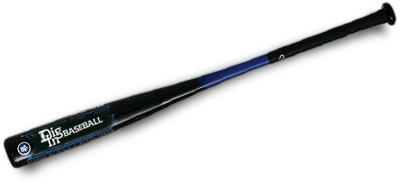Developing a Good Pick-Off Move
Posted in: Team Results
Developing A Good Pick-Off Move
The pick-off move is an important, but overlooked part of pitching and controlling the running game. You must develop a good pick-off move and understand how to disrupt base-runner timing because it’s critical to slowing base stealing. Picking off a runner is difficult and often at the complete fault of the runner. As a base runner, you should never get picked off if you’re attentive and understand your limits of quickness. However, a solid pick-off move can inhibit a base runner’s ability to take an extra base on a pitch in the dirt, keep him closer to the bag—allowing for a better chance at a double-play ground ball—or keeping him from moving first to third, or scoring from second on a hit.
A right-handed pitcher needs quick feet, and a quick release for a successful pick-off. The faster a right hander rotates his body and moves his feet, the quicker he’ll release the baseball, and the more likely he’ll catch the base-runner, or at least shorten his lead and lower his aggressiveness. Agility drills are essential to developing quick feet. Practicing on the mound is the best way to acquaint a pitcher with proper motion and feel for quick movement. You need to work to develop the necessary footwork to release the ball quickly and accurately.
In attempting a pick-off, a right-handed pitcher has to shorten his motion on the throw to minimize the time he takes to get the ball to the bag. In the same way a catcher isn’t able to take a full windup to throw to second on a steal, a right-handed pitcher can’t wind up to throw—it takes too long. A slow, stagnant move will allow the base-runner comfort in increasing his lead and in leaving the bag. A left-handed pitcher has an advantage in that he’s able to watch the runner at first. A quality left-handed pick-off requires consistency in delivery … both on the pick-off and in the delivery to the plate. The more the pick-off looks the same to the point of delivery as it does to the plate, the more likely you will fool the base runner, or at least have him wait longer to decide whether to advance or hold.
Left-handed pitchers must develop balance and ability to hold the balance point of the leg prior to delivery, allowing them to deliver the ball to the plate or attempt a pick-off. This allows pitchers to throw to the bag if the base-runner tips his hand and breaks towards second. Also, a left-handed pitcher must develop a consistent delivery where the leg raises straight. If the front foot crosses behind the back leg, the pitcher has to throw to the plate. This allows the runner to get a jump. A lefty also can develop a quick step-back move, in which he throws over without beginning his toward-the-plate motion, forcing the runner to minimize his lead during “set.” Both pitchers can affect timing of the base runner by altering their cadence on delivery to the plate. Holding the baseball becomes a great way to throw the runner’s timing off, and forces him to be less aggressive.
Right handers need to develop quick feet and a shorter delivery to compress the time it takes to deliver the ball to the bag. Left handers need to develop balance to hold their leg kick, allowing them to throw if the base-runner shows his intention to steal early. Work on a pick-off move from the set position, where you’re able to step back off the rubber and release a snap throw without beginning a motion for to-the-plate delivery.
How have you developed a pick-off move that works? Why have you been successful, or perhaps, less successful? ~ By Coach Steve Switala. “Coach Swat” was assistant coach at Anne Arundel Community College when the team won the 2009 Maryland JUCO State Championship. Contact him at sswitala@diginbaseball.com





